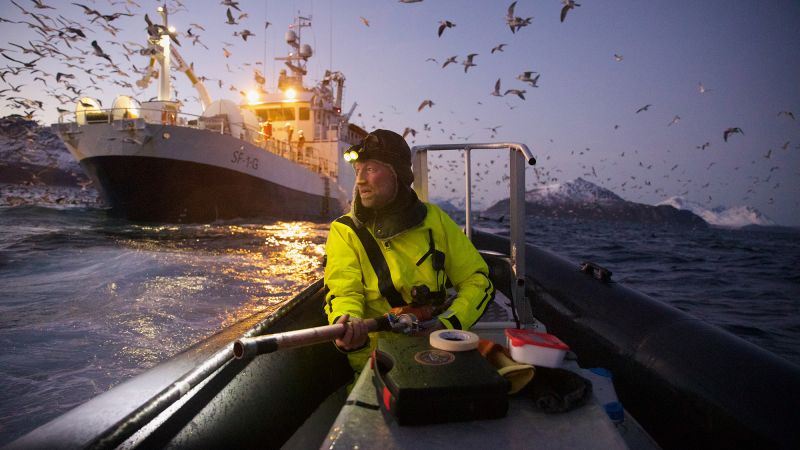The annual Nature Scientist at Work competition not only highlights the splendid diversity of scientific endeavors across the planet but also provides a visual documentation of the captivating stories and challenges that scientists face in their work. This year’s competition showcased an impressive array of over 200 entries, with six winners standing out for their breathtaking imagery and compelling narratives. The event, now in its sixth year, is held under the auspices of the respected journal Nature and judged by a panel of its esteemed staff members dedicated to promoting the art of science visual storytelling.
Among the winning entries, one image took the crown as the overall winner. Captured by Emma Vogel, a dedicated PhD student at the University of Tromsø in Norway, this extraordinary photograph features biologist Audun Rikardsen painstakingly scanning the waters surrounding fishing trawlers in Northern Norway. In this dynamic scene, Rikardsen holds an airgun, a specialized tool he uses to deploy electronic tags that monitor the movements of whales—a critical aspect of marine biology. This poignant moment bridges the gap between human activity and marine life, illustrating the efforts scientists take to study and protect these magnificent creatures.
Vogel’s vivid portrayal of the whale research process offers a sensory glimpse into the world of marine biology. In a quote shared in a press release associated with the competition, she recounted, “You could smell their breath. And you could hear them before you can see them, which is always quite incredible.” Such intimate experiences encapsulate the beauty of scientific research and the profound connections researchers forge with the natural world.
The other winning images are as varied as they are captivating, each encapsulating a different scientific endeavor across contrasting climates. One photograph captures the intense moment scientists drill an ice core in the Svalbard archipelago, while another displays a biologist gently cradling tiny froglets in California’s Lassen National Forest—a reminder of diverse ecosystems and the need for conservation. These images not only depict various scientific practices but also evoke a sense of wonder at the intricate tapestry of life on Earth.
Another notable image shows a scientist working alongside a weather balloon amidst fog on Mount Helmos in Greece, highlighting the delicate and often unpredictable nature of environmental conditions that scientists must navigate. Meanwhile, the vast South Pole Telescope at the Amundsen–Scott South Pole Station shines brilliantly under an aurora-lit sky, representing a fusion of science and the sublime natural beauty of our universe.
Further adding to the collection of impressive visuals is a photograph capturing the moment a man enters a cabin silhouetted against the dark, starlit sky in the remote expanses of Eastern Siberia. This image, taken by Jiayi Wang, who accompanied the man on his expedition, speaks to both the allure and the challenges of conducting research in isolated locations. Wang poignantly described the contrasting beauty and monotony of life in such environments, stating, “There’s no network there. And the only thing you can do is watch the rocks.” This statement reflects the dual experience of joy and isolation that many scientists face while working at the frontiers of knowledge.
Overall, the Nature Scientist at Work competition serves as a vital platform, not just to recognize exemplary photographs, but also to honor the myriad ways in which science pursues understanding amid the complexities of our world. Each winning entry stands as a testament to the innovative spirit of scientists; they are not just experts in their fields but are also skilled storytellers who share their experiences and insights through the lens of their cameras, illuminating paths to appreciation, understanding, and conservation of our shared planet.












